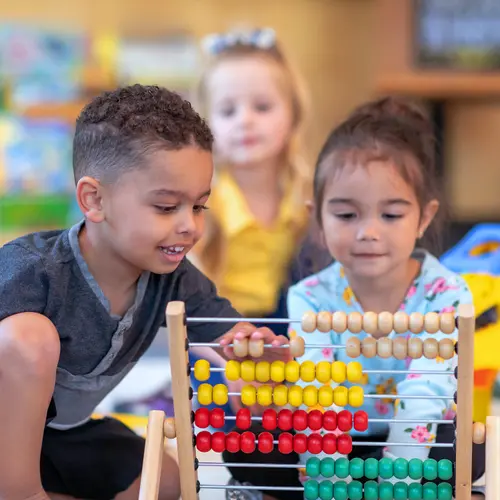June 5, 2000 -- On a recent Saturday morning, a few small children and a swim instructor played ring-around-the-rosy during a preschool beginner's swim class for 3- to 5-year-olds at a YWCA in suburban Des Moines, Iowa. The children stood on a table placed in the shallow end. Sitting poolside, Michelle Quinn watched her daughter Bridget, almost 3, splash around.
This scene is a common one at pools across the country, but parents are advised to take a closer look at all swimming programs for children under age 4, says the American Academy of Pediatrics. That group recently made headlines with a recommendation that children younger than 4 stay away from swimming lessons altogether because they aren't developmentally ready.
"I just thought my daughter would have fun and get used to the water," Quinn says of her 3-year-old. But other parents, says the Academy, may get a false sense of security, thinking that swim programs for the very young -- some of which welcome infants and toddlers -- can teach children to stay safe in the water.
No Way to "Drown-Proof"
"We wanted to make certain that people understand that there is no published scientific evidence that those programs for infants and toddlers are going to make your baby safer," says Barb Smith, MD, a Tucson pediatrician who helped write the swim policy. The Academy particularly wanted to warn parents away from the minority of swim programs that claim to "drown-proof" small children by repeatedly immersing them in water.
Usually children aren't developmentally ready to learn how to swim until age 5, the Academy says, though it admits there is no definitive research on the best age for kids to master the complex skills of swimming. The pediatricians cite a recent study showing that swimming skills are more readily acquired once motor development has reached the 5-year level. The same study found that some children under 4 may pick up swimming skills, but they need more instruction and are limited by their neuromuscular capacity. The group also warns that small children who learn not to fear the water may incautiously try swimming on their own.
Debbie Dorsey, outgoing president of the aquatic section for the National Recreation and Park Association, in Ashburn, Va., says she sees no problem with children under 4 participating in swim programs -- as long as parents are routinely warned that the lessons will not drown-proof small children. "It's a one-on-one kind of time where they can work on movements in the water," says Dorsey, who is Georgia Tech University's aquatics director. "But they're not going to come out and swim."
Yet Tom Griffiths, author of several books on pool safety, argues that children under age 4 are not "physically or emotionally ready" for any aquatic program. Even if classes make no promises, parents tend to push their kids, says Griffiths, Pennsylvania State University's aquatics director. "Just play with your kids in the water," he says, and ease them into getting their faces wet. But save the swimming lessons for later.
The Best Way to Get Kids' Feet Wet
An estimated 5 to 10 million American infants and preschool children participate in some type of aquatic program, according to the Academy. At the suburban Des Moines Y and many others, "lessons" start at age 3 -- but they're very low-key. "At 3, it's just getting them comfortable in the class. They're just exploring."
For kids aged 6 months to 3 years, lessons aren't offered. Instead, the children and their parents can take a water adjustment/orientation class called "Waterbabies." "Sing and blow bubbles with your new infant," reads the Y brochure's description of the program. "This fun class emphasizes water adjustment and quality family time."
Smith advises parents to make sure they join the right program for the right reasons. "If you're going because you enjoy being in the water and want to share that with the baby, I don't have a problem with that," she says. "If you're going with the expectation that your baby is going to swim and this will make the baby safer, don't do it,"
- Don't consider any child safe in the water, even after participation in an aquatic program. First, make sure that swimming ability has been demonstrated, and then stick to pools with lifeguards on duty. With infants or toddlers, even in shallow water, always stay within an arm's length of the child.
- If you opt for an infant/toddler water program, pick one that doesn't require children to go under water repeatedly. Kids can swallow so much water that they develop water intoxification, resulting in convulsions, shock, and even death. Swallowing water also makes young children more susceptible to waterborne bacteria such as E. coli or Cryptosporidium.
- Don't use water wings and other blow-up swimming aids as stand-ins for life vests. They offer a false sense of security and can suddenly deflate or fall off. Kids can also get caught in inflatable swim rings if they turn over and are unable to right themselves.
- Finally, it's an excellent idea for parents and caregivers who are going to accompany young children to any place where there's water to learn CPR and other lifesaving emergency techniques.
Betsy Rubiner, based in Des Moines, Iowa, specializes in writing about children and families. Her work has appeared in The New York Times, The Philadelphia Inquirer, and The Boston Globe, among other publications.

